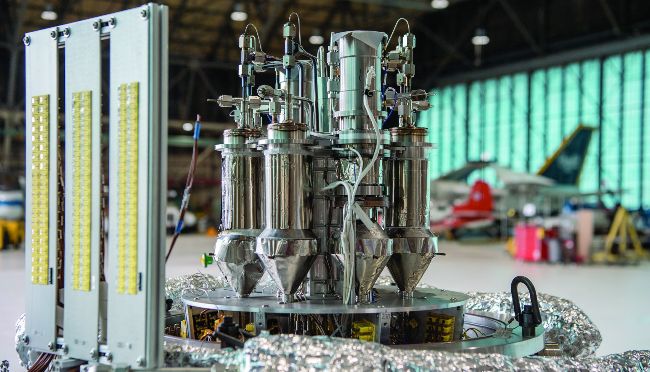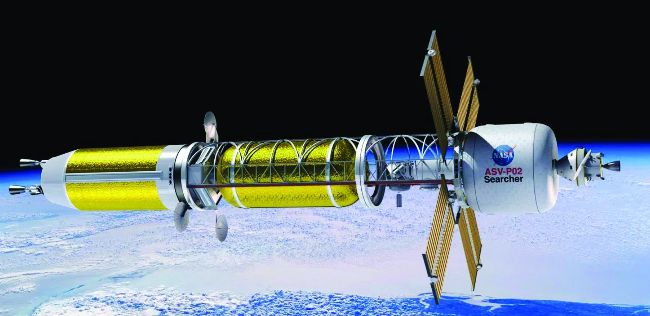Sparking
A Space Nuclear Power Revolution
by Alex Gilbert

NASA's prototype Kilopower nuclear reactor for use in space and on planetary surfaces
Credit: NASA
In 2018, a tiny nuclear reactor in Nevada reached criticality and operated for more than a day. The reactor, named Kilopower, represented a milestone—it was the first completely new reactor designed, built, and operated in the United States for several decades. However, the potential implications were much larger for the space industry than the nuclear industry, as Kilopower was intended primarily for NASA’s use, powering the future exploration of the Moon, Mars, and beyond.
Nuclear power is poised to make major inroads as private companies look to commercialize space and countries look to revitalize crewed exploration. But its use in spaceflight is not new. The simplest nuclear technology, radioisotope power sources, has been used in spaceflight since the 1960s. The decay of certain radioisotopes, usually plutonium-238 and occasionally polonium-210, produces small amounts of heat with limited radiation. This heat can be used directly in radioisotope heating units (RHUs) to maintain spacecraft temperatures in the cold of space. It can also be used in radioisotope thermoelectric generators (RTGs) by converting heat to electricity to power spacecraft. Although the amount of heat and power produced is small, usually tens or hundreds of watts, they do so at a low mass and have no moving parts, making them exceptionally reliable.

Artist’s impression of a nuclear-powered nuclear rocket
Credit: NASA
Radioisotope energy powered most major deep-space exploration missions including the Pioneer, Voyager, and New Horizons missions, as well as the Curiosity rover on Mars. An RTG was also used on five of the Apollo lunar landings to power the ALSEP experimental package left on the surface of the Moon. All U.S. radioisotope missions are powered by plutonium-238, whose 78-year-long half-life allows RHUs and RTGs to produce heat and electricity for decades. This long life was essential for the interstellar missions of the Voyager and New Horizons probes. In addition to these missions, the Soviet Union’s Lunokhod and China’s recent Chang’e landers have relied upon RTGs or RHUs.
Two upcoming missions at the spearhead of NASA’s search for life rely on RTGs. The Perseverance rover recently launched to Mars is powered by an RTG. Meanwhile, the recently announced Dragonfly mission to Titan features a quad-copter drone that will use an RTG to explore more area than any previous planetary lander—the heat generated by the radioisotope will allow the probe to survive Titan’s brutally cold temperatures, an average of minus 290 degrees Fahrenheit (minus 179 Celsius).